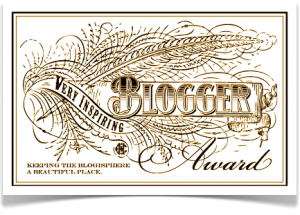
Most everyone recognizes those times when other people trigger unwanted, negative emotions and reactions. There are oodles of how-to articles, too, where one can find advice on how to both recognize and handle those button-pushing situations. What is more difficult to decipher, though, are the times when we push our own emotional buttons.
Let’s first take a look at what getting our buttons pushed by others looks like. Oftentimes it means that someone has intentionally (but sometimes unintentionally as well) done or said something that creates a strong emotional response, which usually triggers negative emotions such as anger, frustration, and shame. An example would be when your grandmother so graciously recounts the time — in front of your kids, no less — when your twenty-year-old self had one too many tequila sunrises and threw up in her rose garden. Grandma may think she’s only kidding around, yet she sure did a great job of pushing your shame and embarrassment buttons.
But what does it look like when we push our own buttons? Somewhat similar to when we become agitated by other people poking at our feelings, it’s when we purposely — or even unconsciously — seek out stimuli and circumstances that bring on negative emotional responses. An example of this would be when someone has been in a horrible car accident and years later continues to look up footage of deadly automobile crashes, even though it inevitably creates more anxiety and stress. So, what to do if you’re stuck in the vicious cycle in which you keep pushing your own buttons? Below are two ways to help you become more aware of — and how to control — your own emotional button pushing behavior.
Are you suffering from post-traumatic stress disorder (PTSD) and/or coping with negative life events? If you already know that you’re dealing with PTSD, then take a look at whatever stimuli that you may be seeking out, which inflames your symptoms. Although people with PTSD often avoid thinking or talking about the traumatic event that caused this condition, you’re not alone if you also gravitate toward images, news items, etc. that remind you of that event. It’s a natural response because it may make you feel as if you’re gaining control over the intrusive thoughts and flashbacks. However, if it increases your symptoms, it may be time to seek counseling (if you haven’t already done so), in order to explore other healing modalities.
If you’re not sure you have PTSD and are experiencing symptoms that include recurrent and distressing memories, flashbacks, nightmares, and severe emotional reactions, you may want to talk to a mental health professional. And even if you don’t have PTSD, please remember that we all have to deal with negative life events, both past and present.
So, regardless whether you have PTSD or not, stay aware of what you decide to read, listen to, and watch — and how it affects you. Yes, most people want to be informed, and, yes, the news can be distressing to us all. But take a good, hard look to see if your stimuli-seeking behavior is harming you. Do you really need to watch the footage of people being swept out to sea during a tsunami if you almost drowned in your youth? Do you really need to read an article on potentially fatal antibiotic-resistant epidemics if your father died of pneumonia? Do you really need to listen to a podcast that goes on about “the next big one” and how many deaths will entail if earthquakes are one of your biggest fears? Probably not. So, make sure to stay cognizant of whatever media you choose to listen to in order to truly stay informed and the unnecessary noise — which would be best for your mental well-being — to literally tune out.
Another question to ask yourself is this: Are you finding true release or… are you falling farther down the rabbit hole? I understand how listening to sad music or watching a depressing movie can be cathartic. When I’m feeling blue, it sometimes helps to relate to melancholic songs and disheartened characters as well as being able to release pent-up tears. Yet, if I do it too much, or if I’m suffering from true depression, these activities often make me feel worse. It’s a tough balance, I know: Even through it’s healthy to acknowledge and process our true feelings, if we continue to pound upon our emotional buttons, we can end up feeling like we’re falling down an unhappy rabbit hole of no return.
So, what to do? Again, it’s about being aware of your own behavior as well as what has worked in the past — or hasn’t. For instance, if you realize that you tend to watch darker-themed shows when you’re feeling down, and it only makes you feel worse instead of better, then it may be time to lighten up your viewing queue by tuning into comedies rather than tragedies. Or what if even thinking about your problems starts to feel like a trigger? A lot of people who have a tendency to ruminate can actually push their own emotional buttons by imagining the worst, what-if scenarios (I know this one only too well myself). In this case, it may be helpful to use the old-fashioned distraction technique. For example, the moment you feel your heart sink and your mind race when contemplating a certain negative thought, turn on some positive music, call a good friend, heck — even watch a goofy dog video. I know this simple technique has saved me from spiraling down many a day…and then later I have a more positive — and less charged — perspective.
In conclusion, it’s all about becoming more aware of how and when push our own emotional buttons and how we can replace old, reactionary behavior with positive, life-affirming actions.
